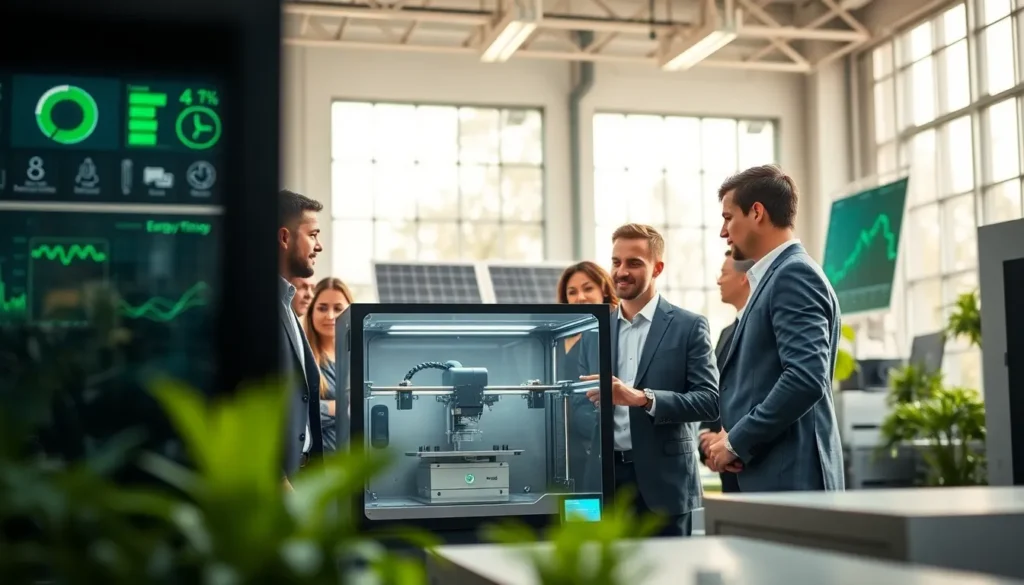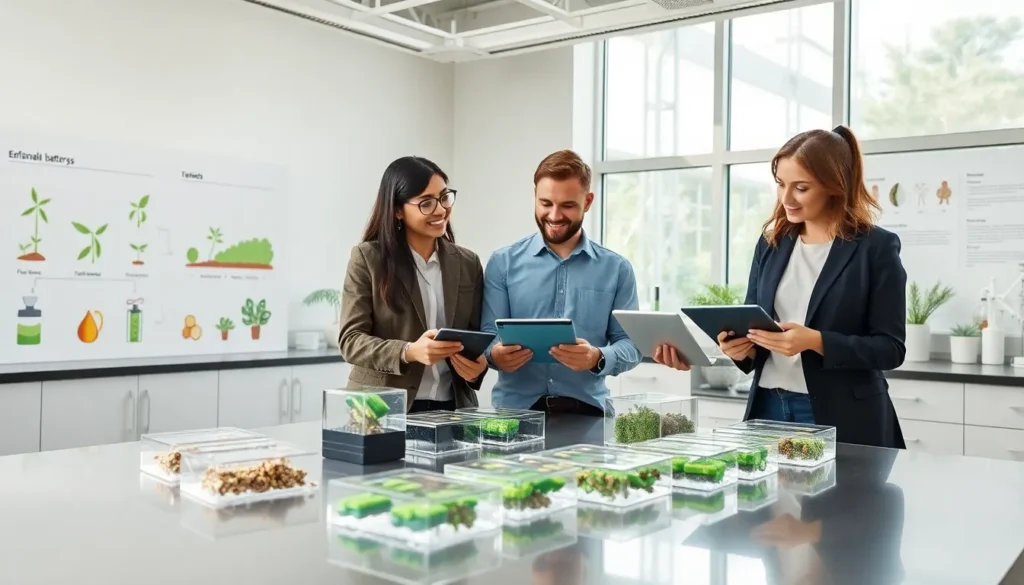Table of Contents
ToggleIn a world where “sustainable manufacturing technology” has become more than just buzzwords, the hope for a greener future rests on our factories. Surely, no one dreams of industrial pollution ruining the planet, right? As manufacturers pivot toward sustainable practices, they’re not just saving the Earth, they’re also priming their businesses for the future. In this text, let’s jump into the nuts and bolts of sustainable manufacturing, explore innovative technologies at play, and unravel what the future holds for manufacturers brave enough to embrace change.
Understanding Sustainable Manufacturing

The Importance of Sustainability in Manufacturing
Sustainability isn’t just a trendy term tossed around at conferences. It’s becoming a central tenet in manufacturing. With mounting environmental concerns, manufacturers are realizing that they must take responsibility for their carbon footprint. Not only do consumers prefer eco-friendly products, but regulators are also cranking up the pressure on factories to act more responsibly. Incorporating sustainable practices can lead to significant cost savings, enhance brand reputation, and ensure compliance with stricter regulations.
Key Principles of Sustainable Manufacturing
At its core, sustainable manufacturing revolves around a few guiding principles. Reducing resource consumption, minimizing waste, and developing products that are safe and recyclable stand tall among these. These principles not only foster environmental responsibility but also strengthen economic viability. When a company reduces waste or adopts green energy sources, its operational efficiency often improves, encouraging long-term profitability.
Innovative Technologies Driving Sustainability
Additive Manufacturing and Its Benefits
Additive manufacturing, or 3D printing, is soaring in popularity, and for good reason. Instead of traditional subtractive manufacturing methods that waste materials, 3D printing creates objects layer by layer, often resulting in less waste. Imagine being able to manufacture spare parts on demand without the need to stockpile excess inventory. This not only conserves resources but also significantly lowers logistical costs. Also, let’s not overlook how customization enhances customer satisfaction, something businesses are always striving for.
Renewable Energy Sources in Manufacturing
Gone are the days of heavy reliance on fossil fuels. Many manufacturers are now transitioning to renewable energy sources such as solar and wind power. It’s a refreshing change that brings numerous benefits. Not only does this shift help cut down greenhouse gas emissions, but it also stabilizes energy costs in the long run. Manufacturers that harness the power of the sun or wind often find themselves ahead of competitors who fail to adapt.
Waste Reduction and Recycling Technologies
Circular Economy and Closed-Loop Systems
The circular economy model is shaking things up by challenging the traditional linear approach to production and consumption. In a linear system, products are made, used, and then tossed aside. In a circular economy, the focus is on creating closed-loop systems where waste is minimized, and materials are reused. By prioritizing durability and recyclability, manufacturers can cut costs while also appealing to environmentally-conscious consumers. This kind of innovation can create new business opportunities and drive demand for sustainable products.
IoT and Smart Manufacturing Solutions
The Internet of Things (IoT) is revolutionizing manufacturing by providing companies with real-time data to optimize processes and reduce waste. Imagine sensors providing feedback on machine efficiency or alerting managers when something’s off. Smart solutions can monitor energy consumption and pinpoint areas for improvement, eventually supporting sustainability goals. As factories become smarter, they’ll be able to identify inefficiencies that were previously inconceivable, leading to substantial resource savings.
Case Studies of Successful Implementation
Examples from Leading Companies
A number of trailblazing companies have set the bar high for sustainable manufacturing. Companies like Unilever and Tesla are not just adopting sustainable practices: they’re redefining them. Unilever’s Sustainable Living Plan focuses on reducing the environmental footprint while boosting social impact. Tesla’s Gigafactory aims for net-zero energy consumption through sustainable practices. These real-world examples lead the way for others to follow.
Lessons Learned and Best Practices
Learning from those at the forefront of sustainable manufacturing can prove invaluable. One critical lesson is the importance of collaboration. Engaging employees, suppliers, and even customers in sustainability initiatives creates a united front. Involving everyone ensures that the vision is clear and makes the implementation process smoother. Also, companies should invest in training staff to adapt to new technologies and practices, as this can significantly enhance operational efficiency.
Future Trends in Sustainable Manufacturing
Emerging Technologies on the Horizon
Looking ahead, several emerging technologies promise to reshape sustainable manufacturing. Artificial intelligence (AI) and machine learning are set to make operations leaner and greener. Imagine algorithms optimizing production lines to reduce energy use, exciting, isn’t it? Also, biotechnology could pave the way for sustainable materials and production processes. Innovations like biodegradable plastics are not just the stuff of science fiction: they’re becoming increasingly viable alternatives.
Policy and Regulation Impacting Sustainability
As manufacturers look to the future, they must stay tuned to governmental policies and regulations shaping the sustainability landscape. With many governments worldwide committing to net-zero emissions, regulations are tightening. Smart manufacturers will adapt, preparing for upcoming rules while also benefiting from incentives. Staying compliant not only avoids costly penalties but also builds brand loyalty among increasingly eco-conscious consumers.




